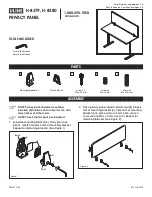
17
1.1.4. Software
MST experiments are analyzed using the dedicated
MO.Control
and
MO.Affinity Analysis
Software
, using the above equations. Prior to determining binding affinities, the MO.Control software
performs several
automated quality checks
of the samples to detect protein adsorption,
aggregation, or other irregularities. Based on the results, a
guided assay development algorithm
provides detailed instructions on how to efficiently improve assay quality (if necessary). Moreover,
the analysis algorithms automatically determine optimal analysis settings, with the aim of minimizing
exposure times of biomolecules to the IR laser and to limit the temperature increase to < 10 °C. The
optimal binding signal is derived based on the identification of the best signal-to-noise ratio at the
shortest possible MST-on times.
1.2. Literature
1.
Jerabek-Willemsen, M., et al., MicroScale Thermophoresis: Interaction analysis and beyond.
Journal of Molecular Structure, 2014(0).
2.
Seidel, S.A.I., et al., Label-Free Microscale Thermophoresis Discriminates Sites and Affinity
of Protein
–Ligand Binding. Angewandte Chemie International Edition, 2012. 51(42): p.
10656-10659.
3.
Wienken, C.J., et al., Protein-binding assays in biological liquids using microscale
thermophoresis. Nat Commun, 2010. 1: p. 100.
4.
Duhr, S. and D. Braun, Why molecules move along a temperature gradient. Proc Natl Acad
Sci U S A, 2006. 103(52): p. 19678-82.
5.
Baaske, P., et al., Optical thermophoresis for quantifying the buffer dependence of aptamer
binding. Angew Chem Int Ed Engl, 2010. 49(12): p. 2238-41.








































